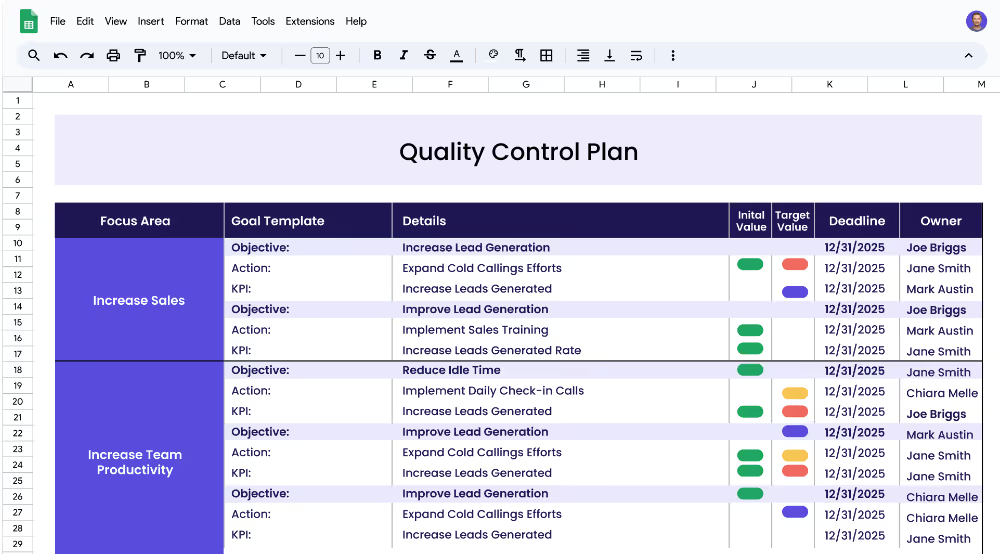A Quality Control Plan outlines the processes and standards that a business should follow to ensure the quality of their products and services. It should identify the steps taken to prevent defects and product failure, the methods and procedures used to measure the quality of product or service, and the corrective actions taken when quality issues arise. Quality Control Plans are an important part of any business’s operations to ensure the highest level of customer satisfaction.
Each focus area has its own objectives, projects, and KPIs to ensure that the strategy is comprehensive and effective.
The Quality Control Plan template is designed for teams of any size and industry. It helps guide the creation of a plan that will ensure the highest quality standards for their products and services. The plan can be customized to fit any team’s needs and can be used as a reference to ensure that all stakeholders are on the same page.
A focus area is the primary area that a Quality Control Plan is intended to improve. Examples of focus areas can include Quality Control, Customer Service, or Risk Management. The focus areas should be clearly defined to ensure that all stakeholders understand the scope of the Quality Control Plan.
An objective is a goal that a team strives to achieve within the scope of a focus area. For example, for a Quality Control focus area, objectives could include improving accuracy of product data and reducing customer returns. Objectives should be specific, measurable, and achievable.
KPIs, or Key Performance Indicators, are measurable targets that are used to measure the success of an objective. Examples of KPIs include increasing accuracy of product data from 95% to 99%, or decreasing customer returns from 5% to 2%. KPIs should be specific, measurable, and achievable.
Projects, also referred to as Actions, are the steps taken to achieve the objectives and KPIs. Projects should be clearly defined and include the methods and processes that will be used to achieve the KPIs. Examples of projects include developing and implementing a process to audit product data or implementing an automated system to track defects.
If you’re ready to leave behind cumbersome spreadsheets and embrace a more dynamic approach to executing your strategy, Cascade Strategy Execution Software is your next progressive step. Cascade offers more than spreadsheets, with features like real-time updates, centralized collaboration, and automated reporting. This not only helps in streamlining the execution but also in maintaining coherence across various levels of collaboration. Simplify the process of executing your strategic plans with Cascade’s robust toolset. Sign-up for free or book a demo with one of our strategy experts to streamline your strategy execution today.


